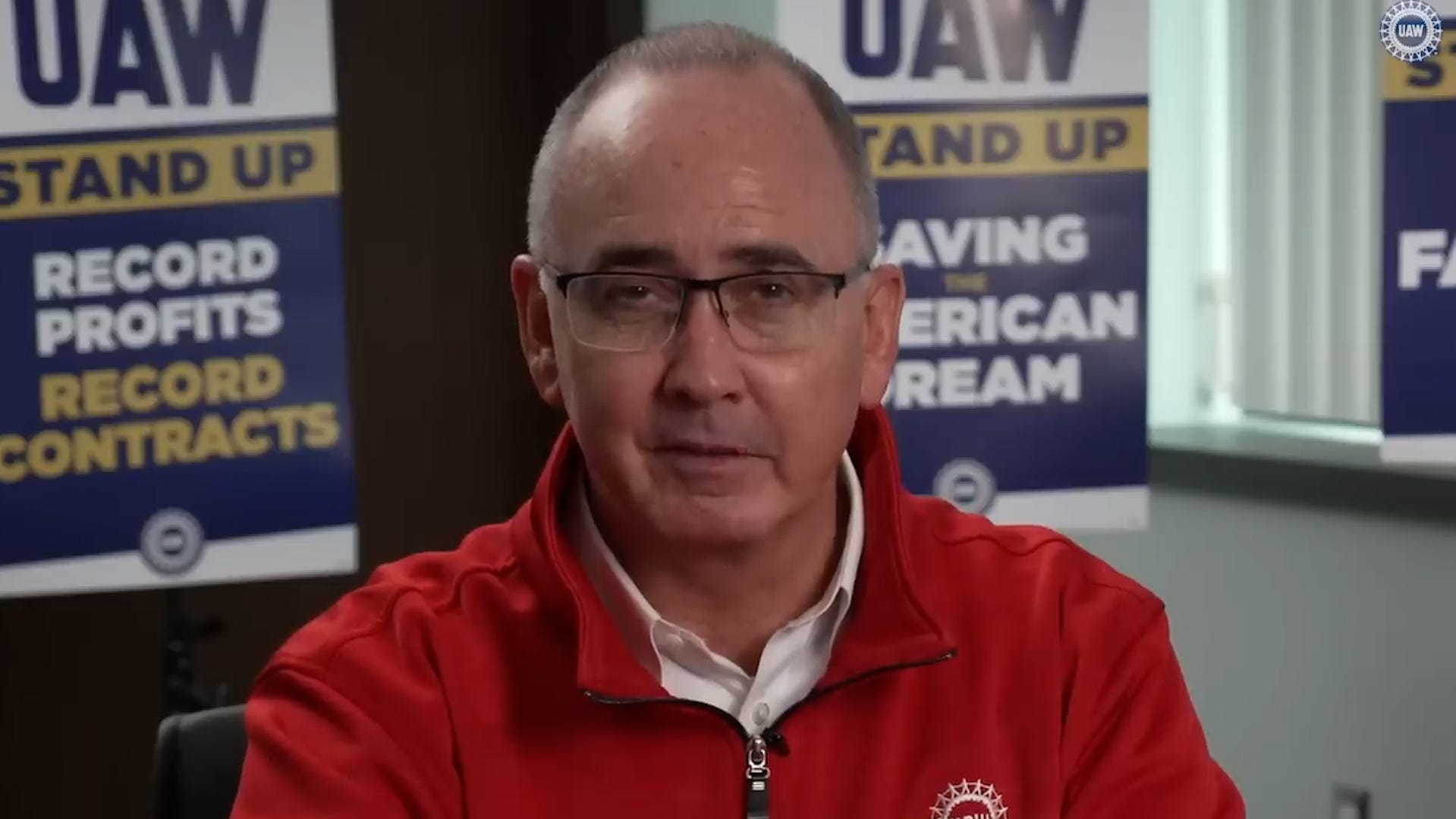Ford government ignores clean energy transition, expands existing gas plants to produce more electricity
Story by The Canadian Press •
Still mired in the Greenbelt scandal, with an RCMP investigation ongoing, the Doug Ford PC government is doing damage control to restore public trust.
Its actions, however, continue to draw questions about the way this government operates when it thinks no one is watching.
The PC treatment of the largest protected greenspace in the world illustrates this government’s position on the environment. Another alarming example is its policy for the energy sector. While much of the world, including Ottawa, moves away from carbon to create electricity, Ford and his government are doing the opposite.
It is well documented that the transition to net zero requires swift electrification of all sectors, as calls have come from international bodies like the Intergovernmental Panel on Climate Change (IPCC) and the World Meteorological Organization (WMO) showing the window for this transition is rapidly closing. All sectors must be electrified, from the heating and cooling of buildings, to corporate vehicle fleets, transit systems, homes that still rely on gas and oil and personal electric vehicles — the two highest emitting industry sectors in Ontario are transportation and buildings. But the transition to clean energy (to pull the planet back from life altering atmospheric crisis) can only happen if electricity is produced from clean energy sources.
Despite once boasting one of the cleanest electricity grids worldwide, after the Liberals ended coal-produced energy almost two decades ago, Ontario’s grid is becoming increasingly dirty once again. Ford and his government tore up clean energy policies introduced by the Liberals and cancelled renewable projects across the province. His answer is gas.
The expansion of gas-fired electricity plants while eliminating investments in renewable energy has not received as much attention as the Greenbelt scandal. But it might be just as devastating for the environment. After the Mike Harris era, when coal was king, Southern Ontario experienced some of the worst air quality in North America two decades ago, as smokestacks spewed carbon into the local airshed, contributing to smog across the GTHA and other parts of the province.
“There have been 26 days, covering nearly a third of the summer and including yesterday, during which the air was projected to be so polluted by vehicle exhaust and emissions from smokestacks that breathing was considered a health hazard.” This was from a Globe and Mail newspaper article on September 10, 2002, highlighting just how bad the air quality across Southern Ontario was.
After the Liberals cleaned things up, demolishing those smokestacks and the coal-fired plants where they once stood, in 2017, oil and gas made up just four percent of Ontario’s electricity grid. By 2022, that number reached 10.4 percent. In the five years the Ford government has been in power, it has more than doubled gas supply for electricity production and failed to create any new renewable energy contracts. While governments around the world are doubling and tripling investments in clean energy, the Ford PCs are moving backward.
As they continue to ramp up natural gas production, emissions from these sources are expected to increase 400 percent, compared to 2017 levels, by 2030 and almost 800 percent by 2040.
“If we do that, then Ontario's municipalities will not be able to achieve their climate targets, because we will have a dirty electricity grid,” Jack Gibbons, executive director of the Ontario Clean Air Alliance, told The Pointer.
Ontario Minister of Energy Todd Smith has publicly stated that no gas plant can be built without municipal approval, writing to Ontario's Independent Electricity Systems Operator (IESO), which manages the province's electricity supply, in December that “it is my expectation that the IESO will be clear about the requirement for a resolution from municipal council supporting a proponent or counterparty with a proposed project located in that municipality, separate and apart from that municipality’s permitting and regulatory requirements”.
Initiation of this policy led to a huge victory for the City of Thorold which said no to the expansion of its Thorold South plant run by Northland Power, forcing the government to backtrack on its plan to ramp up gas generation.
But the same did not happen for Toronto. Despite being one of 35 municipalities saying “no” to natural gas, four days after passing a motion requesting clean energy regulations from the federal government, the IESO accepted the proposal from Ontario Power Generation (OPG) to expand the Portland gas plant by 50 megawatts, a significant increase to the generation station's capacity; the current output is 550 megawatts.
“There's no good reason from an electric power planning point of view,” Gibbons said. “There's no difference between Thorold and Toronto. So you have to assume it's politics.”
The Portland plant, which was initially opposed when it was first commissioned in 2008, is only supposed to run at peak times, but an investigation by the Toronto Star found that during the summer months the generation station is in operation for up to 21 hours a day, supplying dirty energy to the grid to keep up with summer demand as opposed to using renewable energy sources.
“The challenge is that we're now looking at relying on natural gas for more than just that peak need. And beyond just meeting what's called the capacity needs of the system,” Aakash Harpalani, director of clean energy at The Atmospheric Fund (TAF), told The Pointer. “What we really need is just new energy from non emitting resources and in the absence of that, what's going to happen is we are going to turn up our natural gas because that's the only thing we have available to us at this point in time.”
The proposed updates to the Toronto plant will allow it to operate more efficiently with less emissions, operators state. But there has been no comment about the challenges of greater use during peak demand periods.
A report released last year from TAF showed that, even accounting for dips in carbon production resulting from the pandemic, Ontario’s emissions were rising to pre-pandemic levels and above, most notably increasing 28 percent in 2021 largely due to ramping up natural gas use.
The grim statistic has been a cause for alarm for some municipal leaders who are concerned about how the expansion of existing gas plants could impact their own emissions reductions targets. The Goreway Gas Plant in Brampton is also slated for an expansion which could cause an 80 percent increase in greenhouse gas emissions. The proposal has prompted questions from Brampton councillors worried about the inability to meet their already weak climate targets. The City’s climate change plan was already stripped to the bone in order to proceed with budget freezes demanded by Mayor Patrick Brown, and now staff will be reporting back to council this fall on how the gas plant expansion could further impact the City's emissions targets.
Despite the harrowing reality of the electricity dilemma, the PC government is ignoring calls from international bodies stressing the need for a clean energy transition. Just a week before the WMO warned the supply of energy from clean sources must be doubled by 2030 in order to evade temperature increases, the Ford government announced it was procuring additional natural gas power.
Ontario has no shortage of electricity, in fact, the province has been operating in a surplus for over a decade and, according to the government, could continue to operate with the same level of electrical supply until 2025, factoring predictions that demand will increase 1.7 percent per year.
Preparing itself for an increase in demand that will come from rapid electrification of sectors, the IESO recommended in a report released the same day as the Province’s announcement (in October 2022), that Ontario will acquire 4,000 megawatts of new electricity generation and storage to support projected demand across the province, including at least 1,500 megawatts of stand-alone energy storage resources, up to 1,500 megawatts of natural gas generation, with the remainder from other resources.
“Without a limited amount of new natural gas in the near term the IESO would be reliant on emergency actions such as conservation appeals and rotating blackouts to stabilize the grid,” reads the IESO Resource Eligibility Interim Report.
Gibbons said these claims are blatantly misleading.
“2035 is 12 years away. And it only took us about 12 years to phase out our dirty coal fired power plants. When we started the coal phase out program, coal was providing us with 25 percent of our electricity,” he said. “Now, fossil gas provides us with about 14 percent of our electricity, and we certainly can phase it out in 12 years by investing in energy efficiency, by investing in wind and solar electricity, and by investing in energy storage.”
Ontario was a leader when it came to phasing out coal in the early 2000s, replacing much of the high emission energy source with renewable energy. But as it comes time to transition away from fossil fuels entirely, the current PC government is moving in the opposite direction.
“It's much easier for Ontario to move through a net zero carbon electricity grid by 2035, than it is for those other provinces [which still use coal],” Gibbons said.
As demand on the electricity grid continues to increase, Ontario will need to procure new energy outputs (renewable energy sources like wind and solar are ideal solutions) so we can reduce the use of natural gas. This would have both environmental and economic benefits for Ontario.
The International Renewable Energy Agency (IRENA) has confirmed that since at least 2020, renewables have been the cheapest source of energy. The cost of electricity from onshore wind fell by 15 percent, offshore wind by 13 percent and solar by 13 percent between 2020 and 2021. A report from the Agency for the same year found that almost two-thirds of renewable energy generated in 2021 was cheaper than the cheapest coal generation, saving the global economy approximately $55 billion US.
“Natural gas is a fairly expensive resource to use for that role beyond those peak needs, so are we going to pursue some of these other options that have shown tremendous potential but just haven't been pursued?” Harpalani questioned.
But one thing he does commend the Ontario government for is its procurement of additional storage resources. Fifteen-hundred megawatts of additional storage capacity will allow Ontario to keep power on demand for when it is needed.
“The problem is that energy storage doesn't generate electricity. It's an enabler. And so if you're not in tandem, building out your fleet of renewables, what are you filling that energy storage with?” he said.
Despite its seeming ability to do as it pleases, the Ontario government does not fully control the reins on the energy transition. Canada is currently in the process of drafting Clean Energy Regulations (CER) that will help the nation transition to a net zero electricity grid by 2035 and a fully net zero economy by 2050.
The CERs recognize there is a place for natural gas in the electricity grid as a transitional source for production, potentially even after 2035; however, Harpalani said the policy shows governments we cannot solely rely on fossil fuel generation in the future.
“The clean electricity regulations that the federal government has proposed and put forward is to ensure that a the provinces that are already well along the way to decarbonizing their systems, actually are incentivized to go the rest of the way and ensure that the role for fossil fuel generation is limited to really that peak need and ensuring reliability of the of the overall grid,” he said.
But the transition to a zero-carbon grid will look significantly different for Ontario which is suddenly moving backward, to natural gas, after years of leading the country in clean energy investments.
“We do have quite a bit of a headstart relative to some of the other provinces of the country. We had the benefit of having a large fleet of nuclear and hydro generation that really supplies the bulk of energy today,” Harpalani said. “Which is why it is discouraging to see us continue to rely on natural gas.”
The Clean Air Alliance identified loopholes within the draft CER that would allow provinces, like Ontario, to continue burning more natural gas than is needed. Most notably, the regulations exempt gas boilers and combustion engines that come into service before 2025 from certain requirements that will prevent, or dramatically curtail their use after that date.
The Alliance has requested the federal government review these regulations and consider permitting the exemption only for provinces with fossil fuel heavy grids, not ones like Ontario.
“We have a premier in Ontario who's stuck in the 1950s,” Gibbons said. “He also has an ideological hatred of wind and solar electricity. Like the Greenbelt, the Doug Ford government does things that are good for certain well connected corporations that are not good for the people of Ontario as a whole. And this is just another example of that of Doug Ford, doing things that are good for his corporate friends, but are bad for electricity consumers, and bad for our climate and bad for public health.”
Comments on Canada’s Draft CERs can be submitted through the Online Regulatory Consulting System until November 2.
Email: rachel.morgan@thepointer.com
Twitter: @rachelnadia_
Rachel Morgan, Local Journalism Initiative Reporter, The Pointer


















